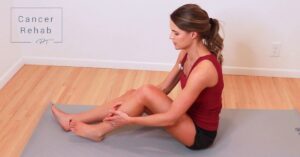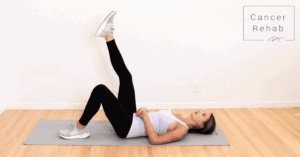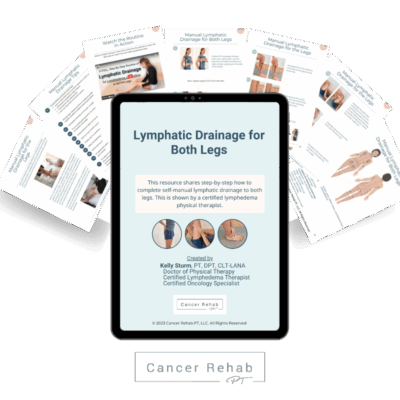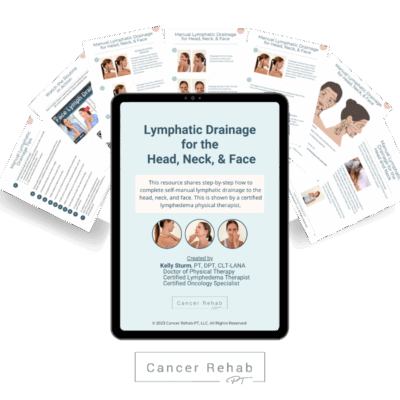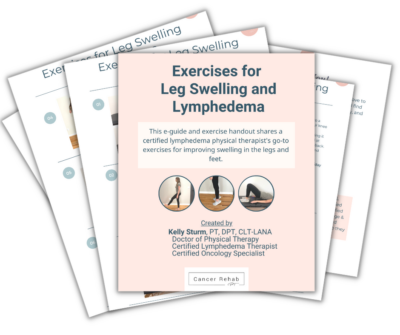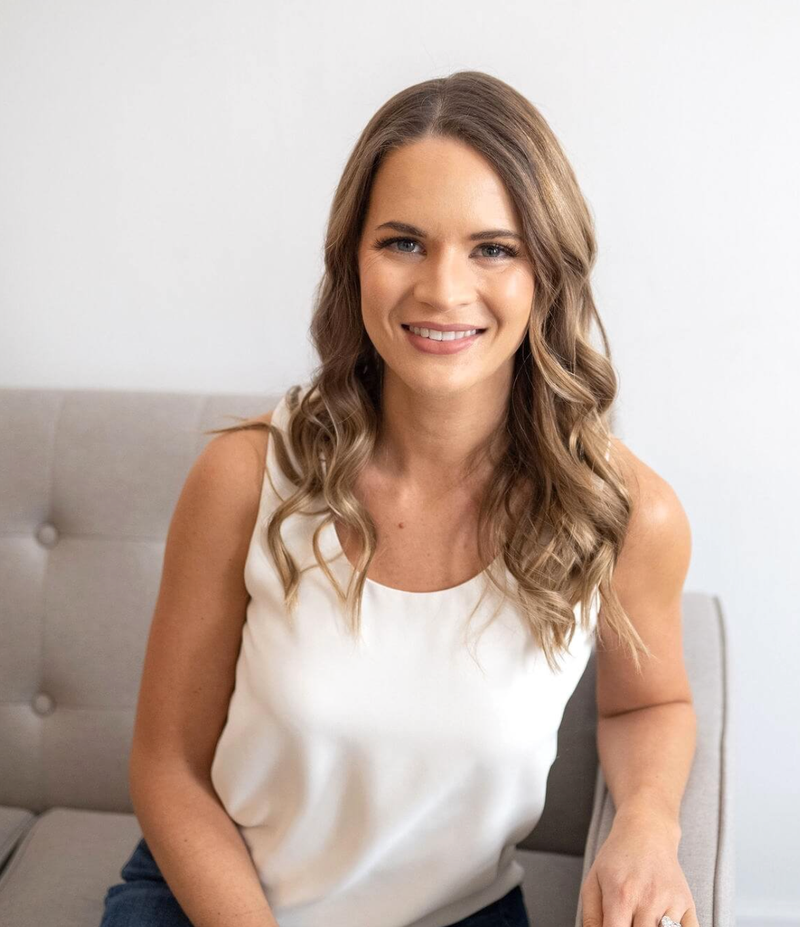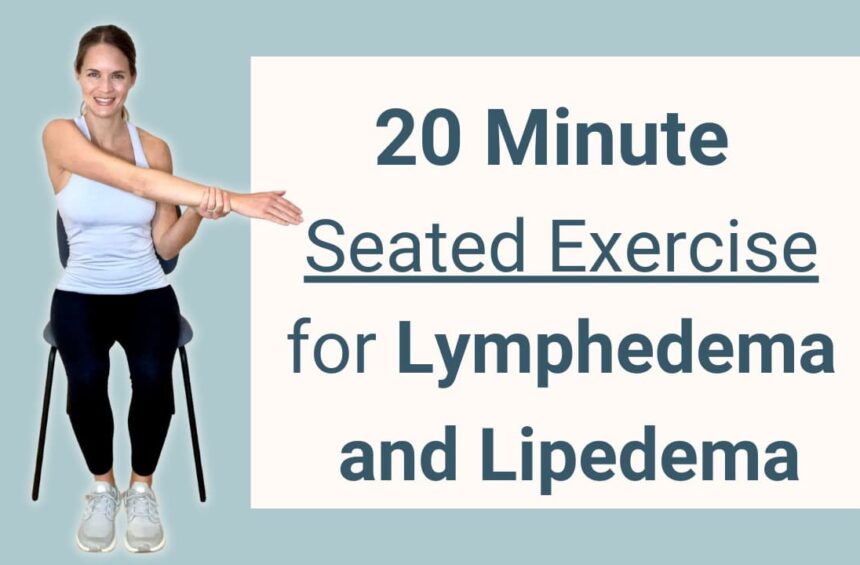You need breast cancer rehabilitation to regain strength, improve your quality of life, and return to your normal daily activities after breast cancer treatment.
The aftermath of surgery, chemotherapy, and radiation can leave you with some emotional and physical problems, but proper cancer rehabilitation allows you to get back to living a fulfilling life.
As a Doctor of Physical Therapy and a Board-Certified Oncology Specialist, I often support breast cancer patients through the rehabilitation process.
I’ll explain what you should expect after breast cancer treatment in this article, and you can also find exercises and rehabilitation tools in my online program Breast Cancer Rehab.
What Is Breast Cancer Rehabilitation?
Breast cancer rehabilitation is a recovery process that includes physical therapy, occupational therapy, and lifestyle modifications. It allows breast cancer survivors to address common issues such as pain, fatigue, lymphedema, and limited mobility and return to their normal routine with confidence.
Rehabilitation for breast cancer helps you regain your strength and reclaim control of your life.
In my practice as a Physical Therapist, I’ve often encountered people who were told that pain, limitations, and discomfort are just part of living after breast cancer. This could not be further from the truth. With the right knowledge and tools, you can help your body heal, resume everyday activities, and lower your risk of cancer recurrence.
Physical Therapy
If you experience pain, limited range of motion, weakness, or other physical problems after breast cancer treatment, you may need to work with a physical therapist. Physical therapists are skilled in various cancer rehabilitation techniques, including gentle stretching, strengthening exercises, and manual therapy, to help you feel strong and healthy again.
Together, you and your physical therapist will develop an exercise program that targets your upper body and any other problem zones.
I understand that physical therapy can be expensive and inaccessible to some people. If you’re looking for easier and more affordable ways to do physical therapy, get started with these free exercises or learn more about my online program Breast Cancer Rehab.
Physical Therapy After Mastectomy
After a mastectomy, people often experience tightness and limited mobility in the chest and shoulder area. Physical therapy after mastectomy typically focuses on gentle stretching, strengthening exercises, scar management, and pain relief.
Exercise
Physical exercise is an essential part of breast cancer rehabilitation. It helps improve your overall health, reduces fatigue, and boosts mood. Research shows 1that physical activity also reduces the risk of cancer recurrence. Make sure to get a green light from your doctor before starting a new exercise routine.
Focus on low-impact exercise, such as walking, swimming, or cycling, as well as strength training to build muscle strength. Stretching routines can help you improve your range of motion and prevent stiffness.
That said, the best type of exercise for breast cancer rehabilitation is exercise that you can stick with long-term. It’s important to stay consistent, so find exercise that you like and make movement a regular part of your daily activities. I have several printable exercise guides to help you with breast cancer recovery:
- Early Exercises for Breast Cancer When Drains Are Still in Place
- Beginner Stretches for Breast Cancer Recovery
- Advanced Stretches for Breast Cancer Recovery
- Beginner Stretches for Radiation Recovery
- Advanced Stretches for Radiation Recovery
- Beginner Strength Exercises for Breast Cancer Recovery
- Intermediate Strength Exercises for Breast Cancer Recovery
- Advanced Strength Exercises for Breast Cancer Recovery
If you want to build a consistent exercise routine as a part of your breast cancer rehabilitation, these digital guides are a great way to start! 😊
Pain Management
Pain is a common issue when living with and after breast cancer. It can be a consequence of surgery, radiation, or chemotherapy. Without proper treatment, some people may experience scar tissue pain even years after a mastectomy or another breast cancer surgery. So, it’s important to have a proper cancer rehabilitation plan in place to manage pain.
Physical therapy can be highly beneficial for pain management. In some cases, pain delivers and other medications may be prescribed. Practices such as acupuncture and yoga may also help you manage pain naturally. Learn more about pain management after breast cancer treatment in Breast Cancer Rehab.
Fatigue
You may experience fatigue for a few weeks after breast cancer treatment, but your energy levels should soon go back to normal. However, for some individuals, fatigue can linger on for months to years later.
In physical therapy, we address this fatigue by creating a physical exercise program tailored to each person’s needs. Physical exercise and eating a balanced diet can help improve energy levels. Learn more in the video below!
Scar Tissue
Surgery for breast cancer can lead to the formation of scar tissue, which may restrict movement and cause discomfort. Make sure to keep the skin around your scar clean and moisturize it regularly. I recommend this Natural Vitamin E Oil, Silicone Scar Gel, or Silicone Scar Sheets.
Scar tissue massage, soft tissue mobilization (STM), and stretching exercises can also be very helpful in softening and breaking down scar tissue, maintaining flexibility, and preventing stiffness. I have an entire program in Breast Cancer Rehab that focuses on managing scar tissue and reducing discomfort. Get access now!
Arm Mobility
Limited arm mobility is a common issue after breast cancer surgery, particularly if your lymph nodes are removed. Strength training, range of motion exercises, and functional training can all help you ease discomfort and avoid long-term neck and shoulder issues.
Your rehabilitation professionals can guide you through the process or you can find education and exercises in my Arm Mobility After Surgery Program.
Occupational Therapy
Occupational therapy helps you return to your daily activities and roles, from navigating tasks like bathing and cooking to safely returning to work. Occupational therapists may help you with Activities of Daily Living (ADLs) as well as provide strategies to improve memory, concentration, and problem-solving skills.
Axillary Web Syndrome (Cording)
Axillary web syndrome, or cording, is a condition where tight, rope-like structures form under the skin of the arm, causing pain and restricting movement. Manual therapy techniques to gently stretch and release the cords as well as stretching exercises to improve flexibility and range of motion can be effective.
It’s not clear how many people develop cording after breast cancer surgery, but limited research shows2 that anywhere from 6-72% of women may develop it. Learn more about cording after a mastectomy.
Lymphedema Management
Lymphedema is a chronic condition that can develop after breast cancer treatment, particularly when lymph nodes are removed or damaged during surgery or radiation therapy. It causes swelling – most commonly in the arm, hand, or chest on the side of the surgery – and can cause discomfort and limitations.
Not everyone develops lymphedema after breast cancer, and there are steps you can take to minimize your risk. Regular physical exercise, staying at your ideal body weight, avoiding infections, and early detection can all help prevent lymphedema.
If you notice swelling in your arms, hands, or chest, get in touch with your medical provider. Lymphedema is chronic, but treating it early keeps swelling from getting worse and, in some cases, may even reverse it.
Exercises to Prevent Lymphedema After Mastectomy
Regular physical exercise is one of the best ways to prevent lymphedema after a mastectomy. Get back to exercise with my YouTube Videos below!
FAQs
How Soon Can I Lift Weights After Mastectomy?
You should follow your surgeon’s advice on when to resume lifting weights. Typically, light activities can be resumed within a few weeks, but more strenuous weightlifting should be avoided for at least 6-8 weeks or until cleared by your healthcare provider. It’s important to go at your own pace and do what feels right for your body. Start slow and gradually increase the intensity of your exercise as your strength improves.
How Often Do You See Your Oncologist After Breast Cancer?
It depends on your individual case and treatment plan. Initially, you may have appointments with your oncologist every 3-6 months. Over time, these visits may become less frequent and eventually transition to annual check-ups. That said, regular follow-ups are important for monitoring your health and catching any signs of recurrence early.
Will I Ever Feel Normal Again After Breast Cancer?
Many people living after breast cancer wonder if they will ever feel normal again. You may be dealing with physical symptoms such as pain, fatigue, and limited arm mobility as well as emotional ones after going through a scary and taxing experience. While your definition of normal may change, it’s possible to live fully after breast cancer. Discomfort and limitations don’t have to become your new normal.
In Breast Cancer Rehab, I share education and tools for successful breast cancer rehabilitation.
What Is the Best Lifestyle for Breast Cancer?
Adopting a healthy lifestyle after breast cancer treatment can speed up your recovery and reduce the risk of recurrence and lymphedema. Focus on eating a balanced diet rich in fruits, vegetables, lean proteins, and whole grains and sticking to a regular exercise routine. If you smoke or drink alcohol, consider quitting or at least limiting your consumption. Getting emotional support from groups, individual counseling, or family and friends is also highly beneficial to help you manage your stress levels.
Online Breast Cancer Rehabilitation Program
Rehabilitation for breast cancer has multiple components, including regular physical exercise, pain and fatigue management, and occupational therapy. Undergoing breast cancer treatment increases your risk of lymphedema, so it’s also important to stay vigilant and contact your medical provider if you notice swelling so you can get early treatment.
As a Doctor of Physical Therapy and a Board-Certified Oncology Clinical Specialist, I know that breast cancer rehabilitation resources are not always accessible to many people. This is why I created Breast Cancer Rehab, an online program where I share education & exercises that will aid your recovery.

